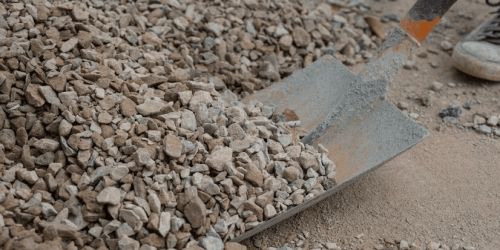In the realm of construction and renovation projects, the impact of weather conditions on concrete removal cannot be overstated. Whether you’re tearing out an old sidewalk, demolishing a building foundation, or renovating a driveway, the weather plays a crucial role in the process and outcomes. The strength and durability of concrete make it a formidable material, but it’s also susceptible to the whims of weather. Extreme temperatures, such as freezing winters or scorching summers, can significantly alter the concrete’s properties, affecting its hardness and structural integrity. Moreover, precipitation, whether as rain or snow, can delay or complicate demolition efforts, causing safety hazards and potential damage to equipment. Understanding these dynamics is essential for planning and executing concrete removal projects effectively, ensuring both efficiency and safety on the worksite. By navigating the nuances of weather conditions, contractors and builders can optimize their strategies and minimize challenges when tackling concrete removal tasks.
Concrete removal is a crucial task in construction and renovation projects, often requiring careful consideration of weather conditions to ensure efficiency, safety, and quality of work. Various weather variables significantly impact the process of concrete removal, influencing everything from equipment performance to worker safety. Understanding these variables is essential for planning and executing concrete removal operations effectively.
Temperature plays a critical role in concrete removal. Extreme cold or hot temperatures can affect the setting time of concrete, making it harder or easier to break apart. Cold temperatures can cause concrete to become more brittle, while excessive heat can accelerate curing, making the material tougher to remove.

Rain, snow, or high humidity levels can pose challenges during concrete removal. Wet surfaces can make it difficult for tools to grip and break apart concrete effectively. Water can also seep into cracks and joints, potentially weakening the structure and complicating removal efforts.
High winds can affect the safety of workers and the control of equipment during concrete removal. Strong gusts can make it challenging to operate machinery precisely and may create hazardous conditions, especially when lifting heavy concrete pieces.
Humidity impacts the curing process of concrete and the effectiveness of tools used for removal. High humidity can slow down the drying of newly exposed surfaces, potentially prolonging the removal process. Conversely, low humidity levels can speed up drying, making concrete more difficult to break apart.
Direct sunlight has significant effects on concrete surfaces, influencing both their thermal characteristics and structural properties. When exposed to sunlight, concrete surfaces absorb heat, leading to an increase in temperature. This rise in temperature can affect the ease with which concrete can be broken apart, as it becomes more brittle under higher thermal stress. Moreover, sunlight accelerates the curing process of freshly exposed concrete, causing it to harden faster.
Rain and wet weather significantly impact the process of concrete removal, presenting challenges that affect efficiency, safety, and the quality of the work performed. Whether removing concrete for demolition, renovation, or repair, understanding these impacts is crucial for planning and executing operations effectively.
Rain and moisture have a noticeable impact on concrete surfaces, particularly in construction and demolition contexts where grip and traction are crucial for effective tool operation. When concrete becomes wet, either from rain or other sources of moisture, the surface friction decreases, making it more difficult for tools like jackhammers and saws to maintain traction and effectively break apart the material. This reduced grip can slow down the demolition process significantly, as tools struggle to achieve the necessary force and precision to remove concrete efficiently.
Wet conditions on concrete surfaces not only reduce grip for tools but also pose significant safety hazards for workers involved in concrete removal operations. When concrete is wet, it becomes slippery, increasing the risk of slips, falls, and injuries among workers handling heavy equipment and tools. The reduced traction makes it challenging for workers to maintain stability and control while operating machinery like jackhammers and saws, which are already heavy and powerful. The potential for accidents is heightened as workers navigate uneven surfaces and attempt to exert force against the slippery conditions.
Rainwater infiltration into cracks and joints of concrete structures poses significant challenges during removal operations. When water seeps into these vulnerable areas, it can undermine the integrity of the concrete by weakening its bond with underlying materials and causing expansion or deterioration over time. This moisture infiltration not only makes the concrete more resistant to removal efforts but also complicates the demolition process by requiring additional drying or preparatory steps to restore structural stability.
Persistent rain or high humidity levels significantly impact the drying time of newly exposed concrete surfaces during removal operations. When concrete is exposed to continuous rain or high humidity, the moisture absorption rate increases, prolonging the curing process. This extended drying period can delay the overall concrete removal process, as it becomes necessary to wait for the concrete to dry sufficiently before further demolition can proceed effectively. Moreover, prolonged moisture exposure can compromise the structural integrity of the concrete, potentially requiring additional measures to ensure its stability and safety during removal. T
Wet weather poses significant challenges to the performance and safety of machinery and tools used in concrete removal operations. Electrical equipment, such as jackhammers, saws, and other power tools, is particularly vulnerable to malfunction or damage when exposed to moisture. Water can infiltrate sensitive components, causing electrical shorts, corrosion, and mechanical failures that compromise equipment functionality. This risk not only threatens worker safety but also necessitates meticulous maintenance practices and, in severe cases, halting operations until conditions improve.
Weather poses significant challenges in concrete removal projects, impacting everything from safety to efficiency. Understanding these challenges and implementing effective strategies is crucial for successful execution.
Understanding the impact of weather on concrete removal is crucial for any successful project. Whether it’s scorching heat, freezing cold, or unpredictable rain, each condition poses unique challenges that can affect the efficiency and safety of the removal process. By partnering with experienced professionals like JUNKAHAULICS in Raleigh, you can ensure that weather-related obstacles are expertly navigated. Their dedicated team not only possesses the technical know-how to handle various weather conditions but also prioritizes safety and efficiency in every job. With their commitment to excellence and customer satisfaction, JUNKAHAULICS stands ready to tackle your concrete removal needs regardless of the weather challenges.
For reliable concrete removal services in Raleigh, reach out to JUNKAHAULICS at 919-478-4814. Whether you have questions about our process, need a quote, or want to schedule a service, our friendly team is here to assist you every step of the way. Don’t let weather conditions delay your project—trust JUNKAHAULICS to get the job done right, rain or shine.


JUNKAHAULICS